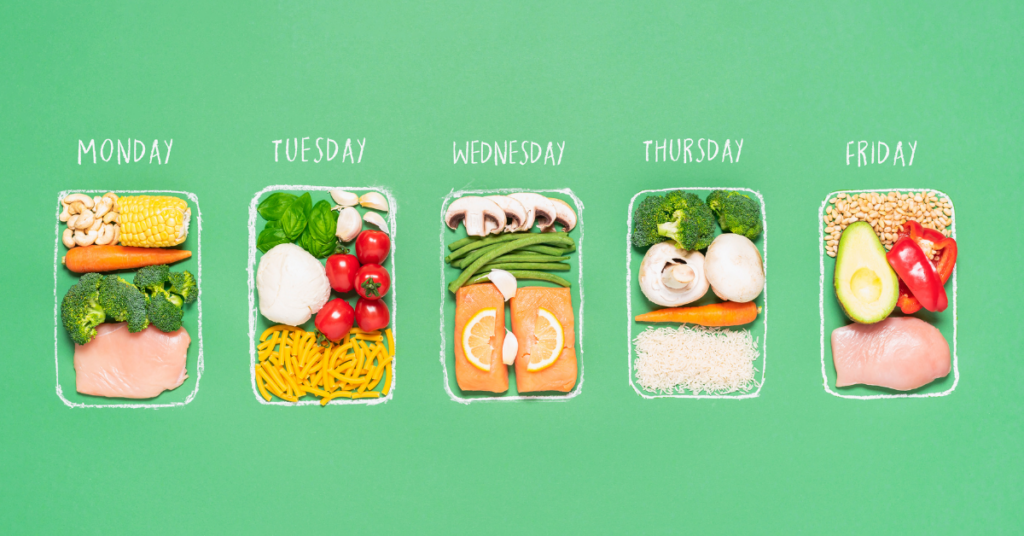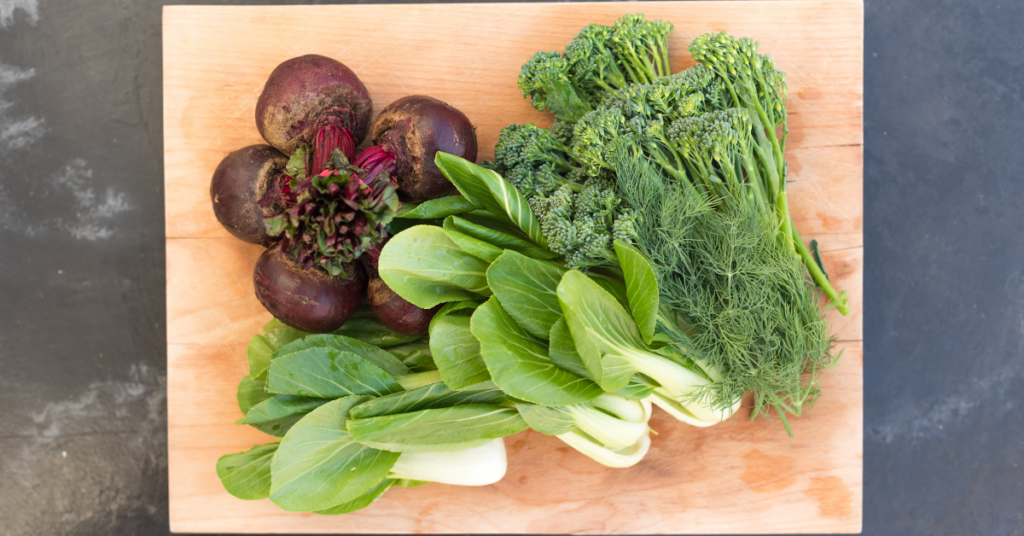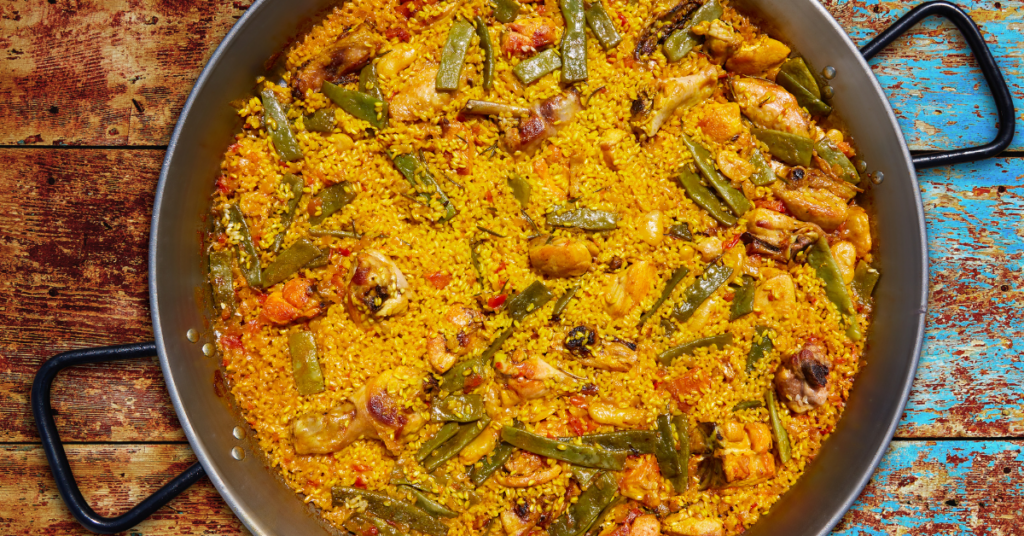Whether you’re a survivalist bracing for the unknown, a busy individual striving for a healthier lifestyle, or someone looking to optimize time and money, learning How To Start Meal Prepping is your gateway to resilience and well-being.
This guide is your roadmap to mastering meal prepping, a skill that bridges the gap between daily sustenance and emergency preparedness. Embark on a journey that empowers you to face everyday challenges and unexpected adversities with confidence and peace of mind.
Why Starting Meal Prepping?
Meal prepping is not just for those anticipating power outages or natural disasters; it’s for anyone seeking a consistent, nutritious diet amidst their busy lives.
Preparing is essential in our fast-paced world, where unexpected events can disrupt our daily routines.
Whether you’re a proactive planner, someone with a hectic schedule, or an individual aiming for healthier eating habits, meal prepping ensures you have timely, balanced meals ready for any situation.
Embrace meal prepping as a tool for nourishment, convenience, and peace of mind in all circumstances.
Saving time and money
One of the most significant advantages of meal prepping is that it saves time and a lot of money. By planning and preparing your meals in advance, you can avoid the hassle of deciding what to cook every day and reduce the temptation to eat out or order takeout.
Improving dietary habits and portion control
Meal prepping enables you to have control over what goes into your meals. You can choose fresh, wholesome ingredients and customize your dishes according to your nutritional needs and preferences.
This makes maintaining a balanced diet easier and avoiding unhealthy food choices throughout the week.
Additionally, by portioning out your meals in advance, you can actively manage your caloric intake and avoid overeating.
In summary, meal prepping helps you eat balanced meals, save time, and reduce extra costs.
How To Start Meal Prepping
But where do you begin? Here are some key steps to get you started on your meal-prepping journey.
Setting goals and determining your needs
Before you start meal prepping, setting specific goals and determining your dietary needs is essential.
Are you trying to prepare for emergencies, lose weight, gain muscle, or eat more balanced meals?
Understanding your goals will help you make informed decisions about portion sizes, macronutrient ratios, and food choices.
Creating a meal plan and grocery list

Once you have established your goals and needs, the next step is to create a meal plan.
A meal plan provides structure and guidance for your week ahead. Start by deciding how many meals you want to prep, whether it’s all three meals or just lunches and dinners.
Consider your schedule and lifestyle when planning the meals you’ll be prepping.
After creating your meal plan, make a detailed grocery list. Take inventory of the ingredients you already have in your pantry and fridge, and then list the items you need to purchase. This will help you stay organized and prevent food waste.
When making your grocery list, focus on nutrient-dense whole foods that will provide the necessary nutrients for your goals.
Include a variety of proteins, carbohydrates, healthy fats, and plenty of fruits and vegetables. Consider pre-portioning some items like nuts, seeds, and snacks to make them easily accessible for grab-and-go options.
Planning your meals in advance and making a thorough grocery list will prepare you for successful meal prepping. This will save you time during the week and help you stick to your healthy eating goals.
Tips for efficient and cost-effective grocery shopping

- Create a meal plan: Before heading to the grocery store, list the meals you want to prepare for the upcoming week. This will help you stay organized and prevent impulse purchases.
- Stick to your list: When you’re at the store, resist the temptation to buy things that aren’t on your list. Impulse purchases can quickly add up and derail your budget.
- Shop in bulk: Buying larger quantities of staple items like grains, beans, and spices can save you money in the long run. Look for deals or consider joining a wholesale club to take advantage of bulk discounts.
Choosing fresh and healthy ingredients

- Go for seasonal produce: Seasonal fruits and vegetables are often more affordable and fresher than out-of-season options. Plus, they add variety to your meals throughout the year.
- Read labels: When selecting packaged goods, check the labels for added sugars, preservatives, and other unwanted ingredients. Opt for products with simple, whole-food ingredients.
- Focus on lean proteins: Pick lean meats, poultry, and seafood for your meals. They’re healthier and can be pre-cooked for convenience.
Ingredient storage and organization

- Invest in quality storage containers: To keep your prepped meals fresh, invest in a set of sturdy, airtight containers. Choose containers that are freezer-safe, microwave-safe, and dishwasher-safe.
- Label and date your containers: Labeling and dating your containers will help you track when each meal was prepared and ensure that you use them before they spoil.
- Organize your pantry and fridge: Designate specific areas for different ingredients, such as grains, canned goods, and fresh produce. This will make it easier to find what you need when it’s time to prep your meals.
By following these tips for grocery shopping, choosing fresh ingredients, and organizing your ingredients properly, you’ll be well on your way to successful meal prepping.
Meal Prepping Techniques

Here are some proven techniques to get you started:
Batch Cooking and Dividing into Portions
Think of batch cooking as making a big pot of your favorite dish, like quinoa or chicken. After cooking, instead of just storing the whole thing, you split it into smaller, individual-sized portions.
Here’s why it’s great:
- Each portion is the same size, so you know exactly what you get every time.
- It’s like having multiple meals ready-to-go; grab a portion when you’re hungry!
Getting Ingredients Ready Ahead of Time

My favorite: Instead of going through the whole process of washing, cutting, or marinating every single time you cook, why not do it all at once? Here’s what this entails:
- Wash and Chop: Think of all the fruits and vegetables you need for the week. Wash them, chop them up, and store them in separate containers. This way, when you need some onions or bell peppers for a recipe, they’re already diced and ready to go!
- Marinate: If you plan to have grilled chicken or steak later in the week, why wait? Marinate them now and let the flavors sink in. Your meat will be flavorful and ready to hit the pan or grill when it’s time to cook.
- Pre-cook: Some ingredients, like certain grains or beans, take a while to cook. You can cook them in advance, store them in portions, and then warm them up or add them to your dishes during the week.
By getting these tasks out of the way, you’re not just saving time – you’re also ensuring that making a meal doesn’t feel like a big chore. The more you can prepare in advance, the easier and faster it will be to get food on the table when you’re hungry.
Meal-prepping Recipes and Ideas

Here are some meal-prepping ideas and recipes to get you started.
Easy and versatile meal prep recipes
- Mason jar salads: Layer your favorite vegetables, protein, and dressing in a mason jar for an easy, portable lunch option. Simply shake it up when you’re ready to eat.
- Sheet pan dinners: Combine your choice of protein, vegetables, and seasoning on a sheet pan, then roast them in the oven for a quick and flavorful meal.
- Slow cooker meals: Throw ingredients into a slow cooker in the morning, and come home to a hot and delicious dinner. Chili, soups, and stews are all great options.
Healthy and balanced meal options
- Protein-packed bowls: Start with a base of quinoa or brown rice, add your choice of protein (such as grilled chicken or tofu), and top with roasted vegetables for a filling and nutritious meal.
- Egg muffins: Whisk together eggs, vegetables, and cheese, then pour the mixture into muffin tins. Bake until set for a protein-packed breakfast or snack option.
- Buddha bowls: Combine a variety of cooked grains, roasted or steamed vegetables, protein (such as beans or grilled salmon), and a flavorful sauce for a well-rounded meal.
Tips for meal prepping for specific diets (e.g. vegan, keto, gluten-free)
- Vegan: Focus on plant-based proteins like tofu, tempeh, legumes, and quinoa. Incorporate a variety of colorful vegetables and grains for a balanced meal.
- Keto: Choose foods high in healthy fats like avocados, nuts, and seeds. Opt for protein sources like meat, fish, and cheese, and limit carbohydrates from grains and starchy vegetables.
- Gluten-free: Swap out traditional grains for gluten-free options like quinoa, brown rice, or cauliflower rice. Be mindful of sauces and seasonings that may contain gluten.
Do you have a favorite meal prep idea or recipe that you’d like to share with us? We’re always eager to expand our collection and try new things. Don’t hesitate to let us know Here or at the end of this article. We’d love to hear from you!
Storing and Reheating Meals
Proper storage and reheating methods are crucial to maintain freshness and preserve the quality of your meals.
Proper storage methods to maintain freshness
To ensure that your prepped meals stay fresh for the week, follow these guidelines:
- Use airtight containers: As mentioned before, I highly recommend investing in high-quality, tightly sealed containers to prevent air and moisture from seeping in.
- Refrigerate promptly: After cooking your meals, let them cool down before placing them in the refrigerator. This quick cooling process helps prevent bacteria growth.
- Divide into single portions: Portion your meals into individual servings before storing them. This makes it easier to grab and reheat later.
- Label and date: Properly label each container with the contents and date of preparation. This will help you track how long each meal has been stored.
Safe reheating practices to preserve quality
When it comes time to enjoy your prepped meals, follow these safe reheating practices:
- Microwave: Reheat your meal in the microwave by placing it in a microwave-safe container and heating it on high for a minute or two. Stir halfway through to ensure even heating.
- Stovetop: For soups, stews, or stir-fries, warm them up on the stovetop over medium heat. Add a splash of water or broth if needed to prevent drying out.
- Oven: To reheat larger portions or meals with crispy toppings, use an oven set to around 350°F (177°C). Place the food in an oven-safe dish, cover with foil, and bake until heated through.
Remember always to use a food thermometer to ensure that your reheated meals reach an internal temperature of at least 165°F (75°C) to kill any potential bacteria.
By following proper storage and reheating methods, you can enjoy the convenience of meal prepping while ensuring the freshness and quality of your meals throughout the week.
Tips for Staying Motivated and Organized
Starting a meal-prepping routine can be daunting, but with the right strategies, you can make it a seamless part of your lifestyle. Here are some tips to help you stay motivated and organized:
Creating a Meal-Prepping Schedule
Creating a meal-prepping schedule is essential for staying organized. Set aside a specific day and time each week to plan your meals, make a grocery list, and prepare your ingredients.
This will help you save time during the week and avoid the stress of deciding what to eat each day.
To save even more time, consider prepping your meals in bulk. Cook large quantities of protein, grains, and vegetables that can be used in multiple meals throughout the week.
This saves time in the kitchen and ensures healthy meals are readily available when hunger strikes.
Keeping a record of successful meal prep recipes
Create a collection of your favorite recipes and organize them based on different themes or categories. This will make it easier for you to plan your meals and try new dishes in the future.
You can also join online communities or follow social media accounts dedicated to meal prepping for additional ideas and support. Sharing your own successes and challenges with others who are on the same journey can help keep you motivated and accountable.
By staying motivated, organized, and creative with your recipes, you’ll be well on your way to successful meal prepping.
Troubleshooting Common Challenges

Meal prepping can be a game-changer when saving time and staying organized in the kitchen. However, like any new habit, it comes with its challenges.
Here are a few common issues you may encounter and how to overcome them:
Dealing with food spoilage and waste
- Proper storage: Invest in high-quality food storage containers that are airtight and leak-proof.
- Plan your meals: Before meal prepping, make a detailed weekly meal plan. This will help you buy only the ingredients you need, reducing the risk of food waste.
- Date and label: Always label your prepped meals with the date they were made. This will help you track when they must be consumed or frozen to avoid food spoilage.
Avoiding recipe boredom and flavor fatigue
- Try new recipes: Explore different cuisines and experiment with new flavors to keep your meals exciting and enjoyable. Look for inspiration on cooking websites and social media, or even create your own twist on classic recipes.
- Plan for variety: Incorporate a variety of proteins, grains, and vegetables into your meal preps. Mixing things up will prevent taste fatigue and ensure a balanced diet.
- Use herbs and spices: Enhance the flavor of your meals by using a variety of herbs, spices, and marinades. They can add a burst of flavor without adding extra calories.
It may take some time to find what works best for you, but once you establish a routine and overcome these common challenges, you’ll be well on your way to enjoying the benefits of convenient and nutritious meals all week long.
Survival Meal Prepping: A Lifeline in Uncertain Times
In the face of unpredictable events, survival meal prepping emerges as a beacon of hope and assurance. This practice transcends the boundaries of daily nutrition, serving as a lifeline when resources are scarce and circumstances dire.
Benefits of Meal Prepping for Survival:
- Readiness in Emergencies: With meals ready to go, you won’t be caught off-guard during power outages or unexpected situations—no need to cook or prepare food when time is of the essence.
- Resource Conservation: Prepped meals mean less reliance on electricity or fuel, both of which might be scarce during blackouts or emergencies.
- Nutritional Assurance: In survival situations, maintaining health is crucial. Meal prepping ensures you have balanced, nutritious meals even when fresh ingredients might be hard to come by.
- Economic Efficiency: Buying and prepping in bulk can save money, ensuring you get the most out of your budget while stocking up for potential crises.
- Waste Reduction: Properly planned and stored meals reduce the risk of food spoilage, ensuring that your valuable resources don’t go to waste.
- Mental Peace: Knowing you have meals ready can alleviate stress during tense situations, allowing you to focus on other survival priorities.
Strategic Selection for Longevity
When prepping meals for survival scenarios, it’s crucial to prioritize foods that have a longer shelf life and provide essential nutrients. We think of grains like quinoa and rice, canned proteins, and freeze-dried vegetables. These staples not only ensure sustenance but also offer a variety of meal options, preventing palate fatigue.
Efficient Storage for Extended Use
The essence of survival meal prepping lies in the art of preservation. Utilizing vacuum-sealed bags, oxygen absorbers, and moisture-proof containers can significantly extend the life of your prepped meals. This ensures that when the need arises, you have access to meals that are safe to consume and retain their nutritional value.
Conclusion
In wrapping up, the art of meal prepping is more than just a culinary trend—it’s a lifestyle choice that bridges the gap between daily sustenance and emergency preparedness.
Whether you’re a seasoned survivalist, a diligent prepper, or someone simply looking to streamline their weekly meals, the principles remain the same: foresight, efficiency, and adaptability.
Embracing meal prepping is not just about having food ready; it’s about ensuring that, come what may, you’re nourished, empowered, and prepared to face any challenge. So, as you stand at the crossroads of daily life and potential emergencies, remember that every meal you prep is a step towards self-reliance, resilience, and peace of mind.
Dive into the world of meal prepping, and let it be your culinary compass in calm and stormy seas.
